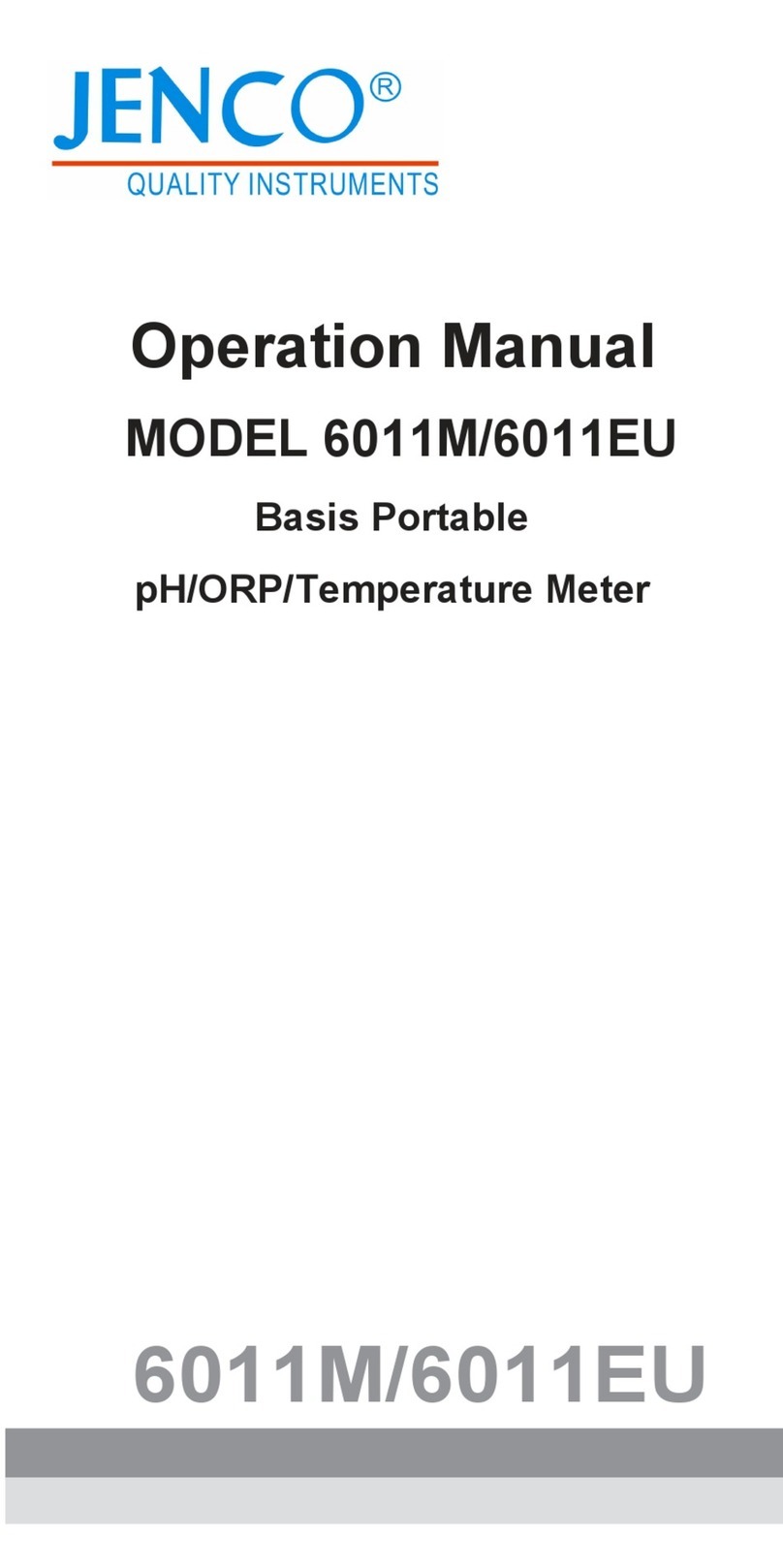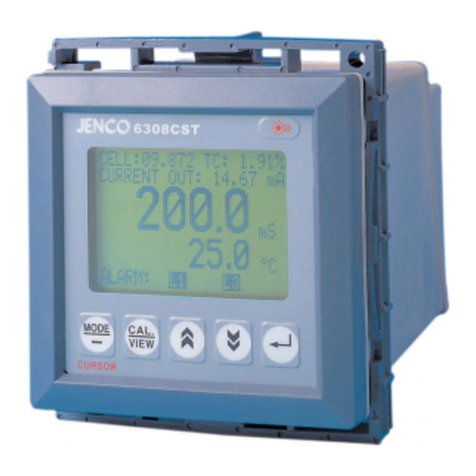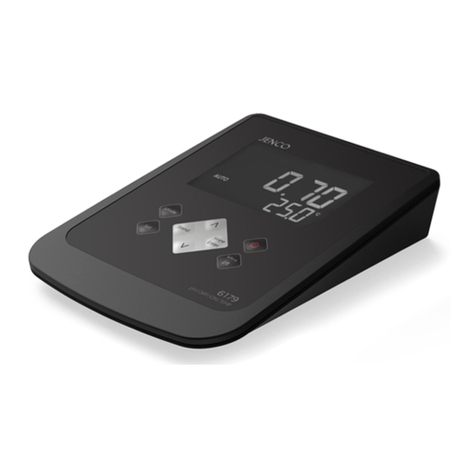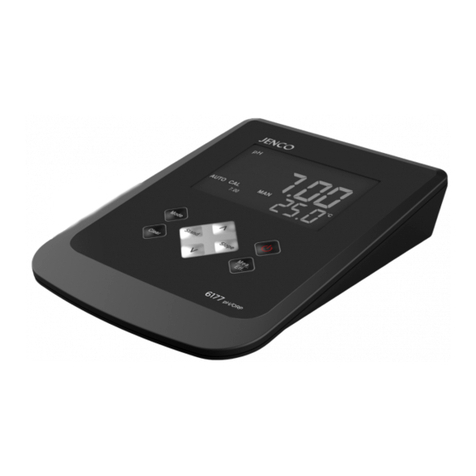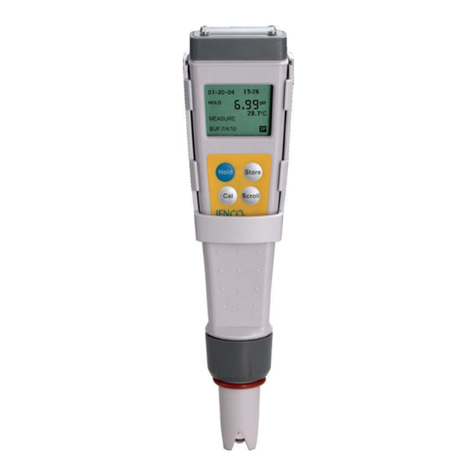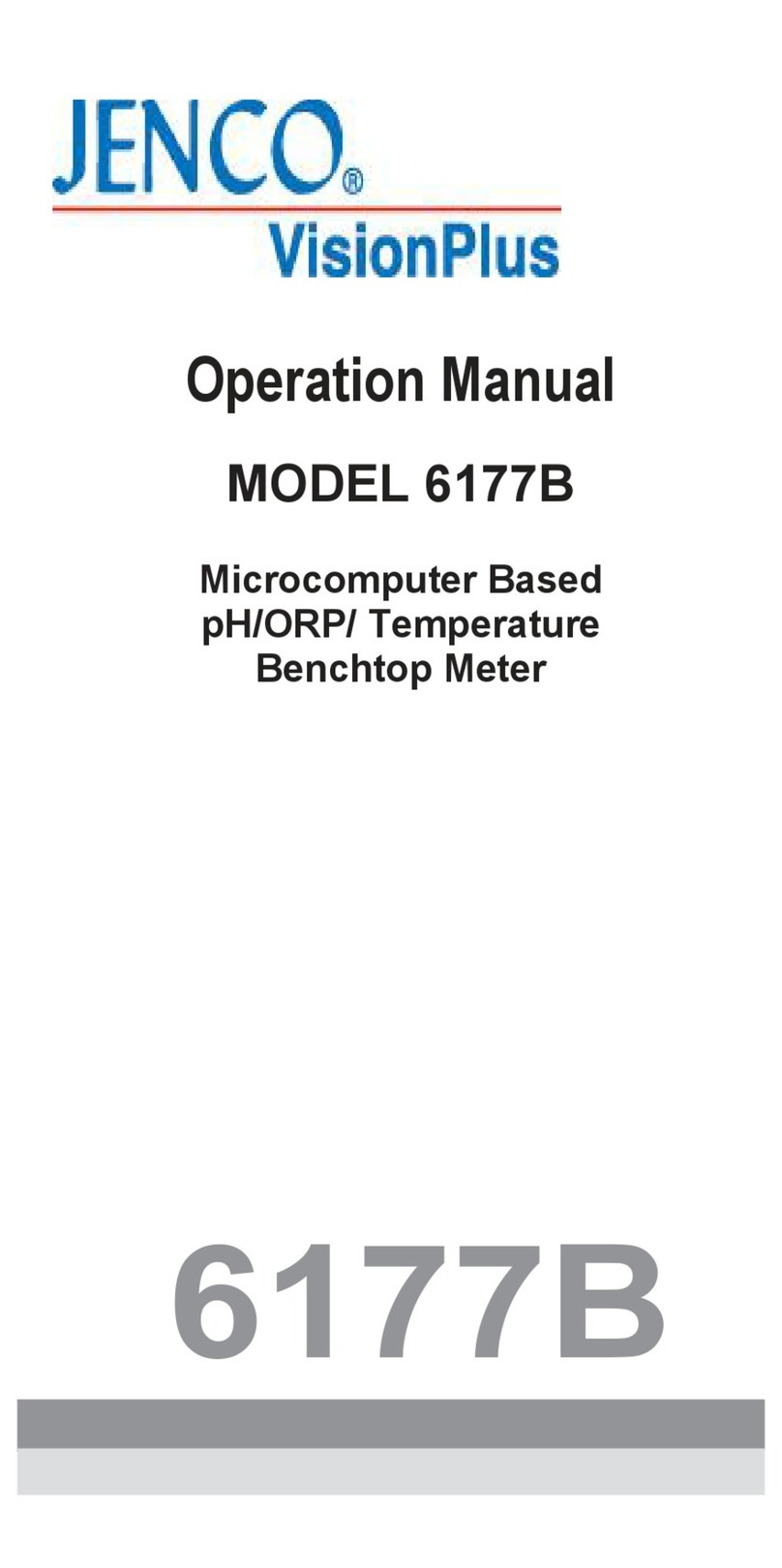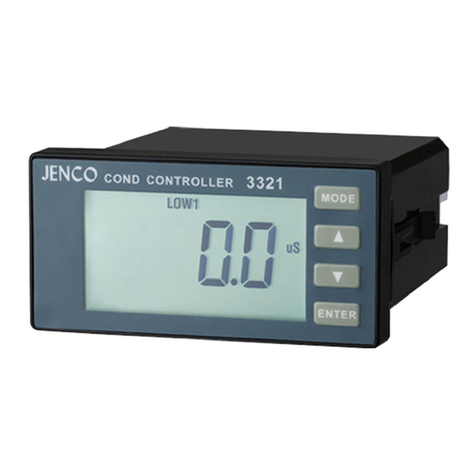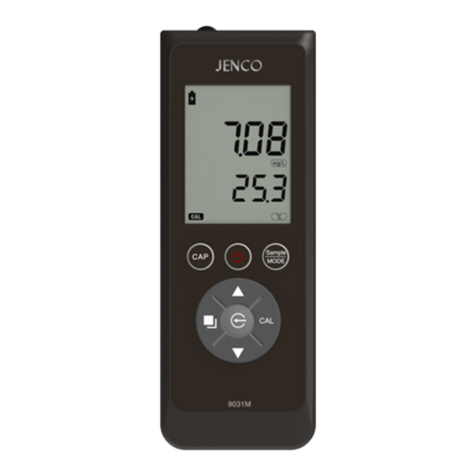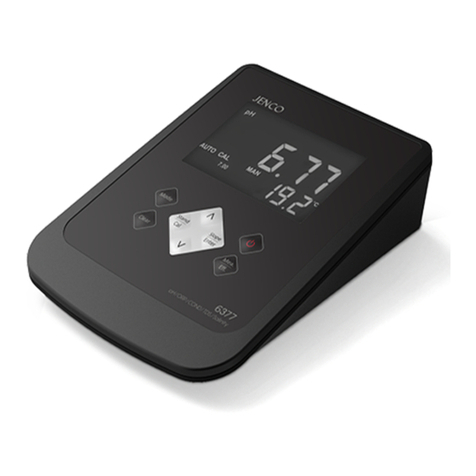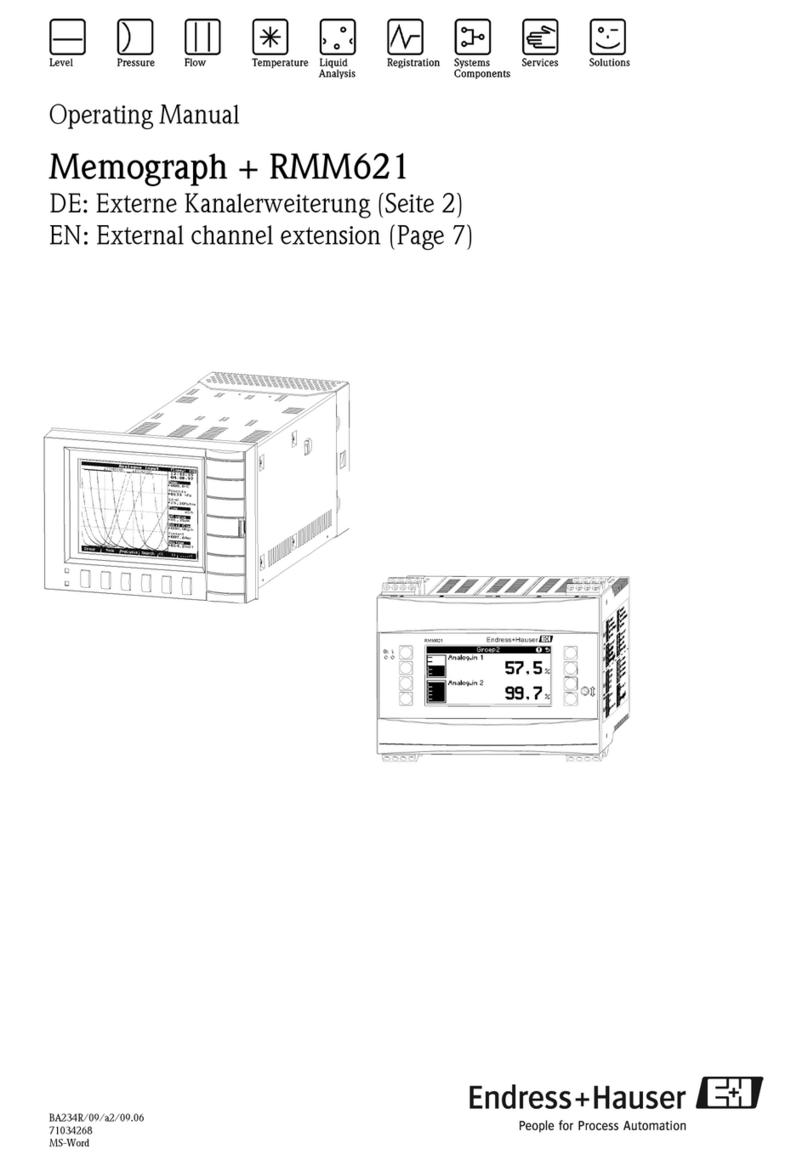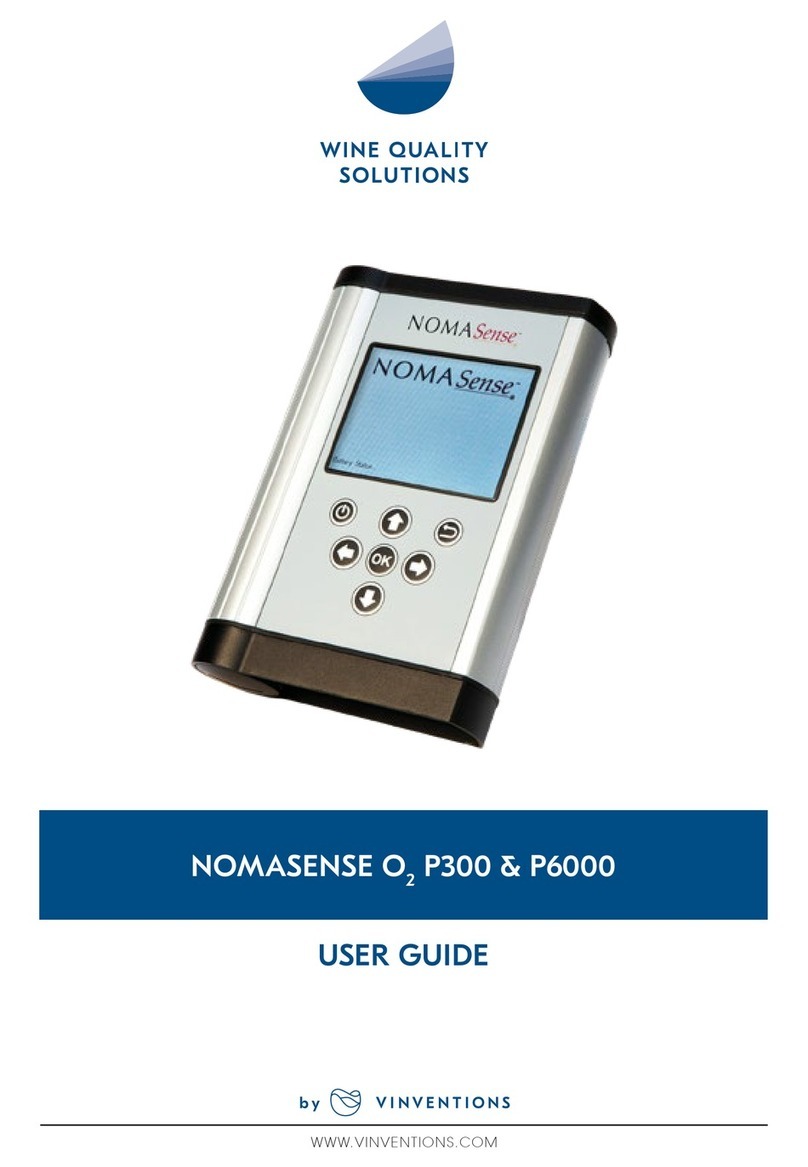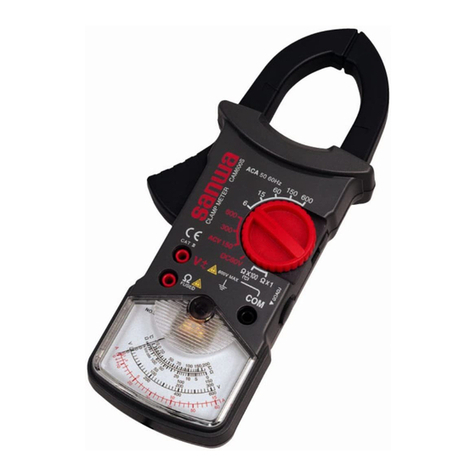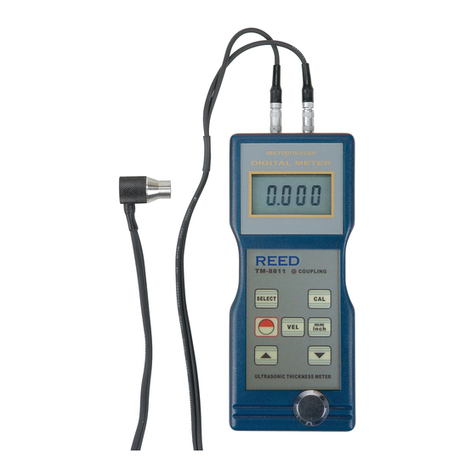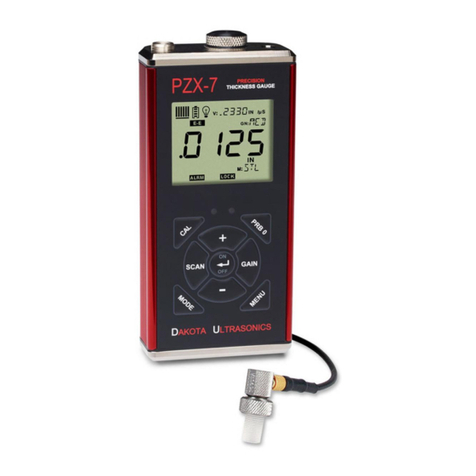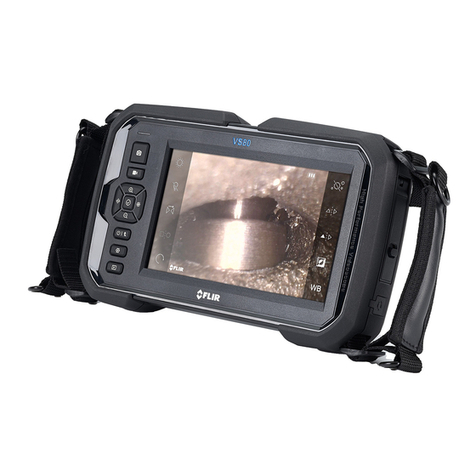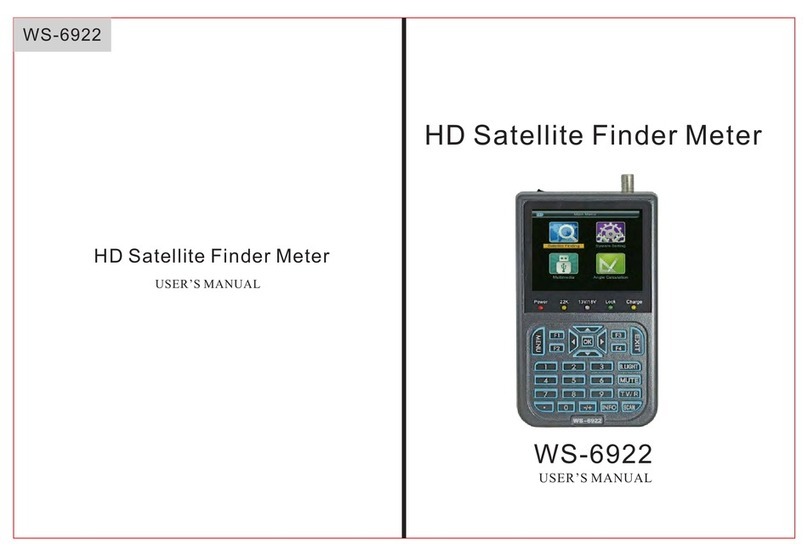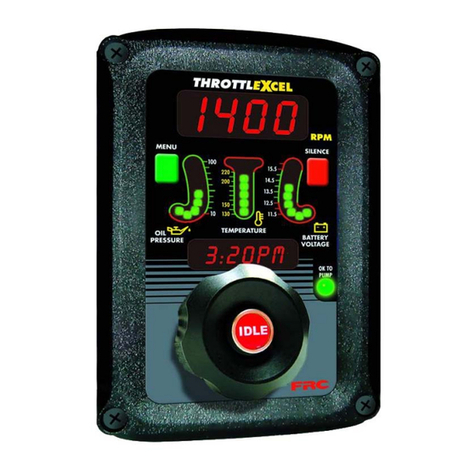JENCO 6377MB User manual

Operation Manual
MODEL 6377MB/6377BEU
pH/ORP/Cond/TDS/Salt/Temperature
Based Bluetooth Benchtop Meter
6377MB/6377BEU

1
CONTENTS
GENERAL INTRODUCTION.........................................2
INITIAL INSPECTION....................................................3
POWER INPUT..............................................................3
INSTALLING THE BATTERIES....................................3
CONNECTORS..............................................................4
DISPLAY & KEY FUNCTIONS.................................................5
A. pH/ORP Display .....................................................5
EC Display .........................................................6
B. Operational Keys Description ................................7
OPERATIONAL PROCEDURES...................................8
A. Buffer Set Selection ............................................8
B. pH Calibration .......................................................9
C. pH Measurements.............. ..................................12
D. Temperature Measurements .................................14
E. mV Offset ............................................................14
F. mV (RmV) Measurements......................................14
G. Conductivity Calibration .......................................15
H. Conductivity, Salinity, TDS Measurements .............17
I. Save,Recall and Delete Data..................................18
J. pH Buffers........................................................... 19
K. Preparing Conductivity Standard Solutions............ 19
APP NAVIGATION....................................................... 20
FCC WARNING STATEMENT..................................... 25
ERROR DISPLAYS AND TROUBLESHOOTING IN
pH/ORP MODE............................................................ 26
ERROR DISPLAYS AND TROUBLESHOOTING IN
CONDUCTIVITY/SALINITY/TDS MODE..................... 27
SPECIFICATIONS....................................................... 28
WARRANTY................................................................. 29

2
GENERAL INTRODUCTION
Thank you for selecting the 6377MB/6377BEU meter. The
6377MB/6377BEU is a precision tool that measures pH, mV (RmV),
Conductivity, Salinity, TDS and temperature. A built-in
microprocessor stores, calculates and compensates for all
parameters related to pH and Conductivity determinations including
pH and Conductivity electrode temperature characteristics,
electrode slope deviations, offset and buffer solutions. The
6377MB/6377BEU is a 5th generation pH/ORP/Conductivity/
Salinity/TDS/temperature Bluetooth benchtop meter with iOS and
Android tablet connectivity.
This meter has a waterproof IP54 case. The mechanical keys are
highly reliable with tactile and audio feedback. It is powered by six
AAA-size alkaline batteries or with a UL/CE approved AC adapter
(OUTPUT:DC9 V). The meter also displays a “BAT” message when
the batteries are in need of replacement. Re-calibration is not
required when power is restored.
The front of the meter has a large LCD that displays pH, mV (RmV),
Conductivity, TDS, Salinity and temperature simultaneously along
with user prompts and mode indicators. The unit prompts the user
through calibration and measurement procedures.
An AUTOLOCK feature for both pH and mV (RmV) measurements
enables the unit to automatically sense the end point and the
“LOCK” display indicates the end point value of a measurement.
AUTOLOCK and user prompts help eliminate most errors in
determining pH and mV values, resulting in precise, repeatable and
error-free measurements. The 6377MB/6377BEU can also be used
in non-AUTOLOCK mode.
The unit is also equipped with a non-volatile memory allowing the
user to store 750 different sets of readings. This unit will assign a
site number for each set of reading so the user can review the data
easily.
The model 6377MB/6377BEU is available with pH, ORP,
Conductivity and ATC (Automatic Temperature Compensation)
probes. Other features include up to 5 point calibration for pH and, 1
point calibration for both Conductivity and ORP, electrode offset
recognition, electrode slope recognition, electrode efficiency display,
built-in buffer coefficients, automatic or manual temperature
compensation and 50/60 Hz AC noise rejection. This meter is
user-friendly for laboratory application.
[IMPORTANT NOTE: The 6377MB has a 10 KΩ thermistor and the
6377BEU has a 30 KΩ thermistor. Their temperature sensor is not
interchangeable.]

3
INITIAL INSPECTION
Carefully unpack the unit and accessories. Inspect for damages
made in shipment. If any damage is found, notify your JENCO
representative immediately. All packing materials should be saved
until satisfactory operation is confirmed.
POWER INPUT
The model 6377MB/6377BEU can be powered by an UL/CE
approved 100 to 240 VAC adaptor as well as 6 “AAA” alkaline
batteries. Check the label on the AC adaptor supplied with the
meter to make sure that the AC line voltage is correct. If the wrong
AC adaptor is supplied, notify your JENCO representative
immediately.
INSTALLING THE BATTERIES
To insert the batteries into the meter, follow the procedure outlined
below.
1. Use a Philip screw driver and unlock the battery cover by
turning the screw driver in the counter clockwise direction.
After unlocking the screw, take off the battery cover (Fig.1)
2. Replace the old batteries with new ones and install them on
the correct polarity position.
3. Put the battery cover back on the meter. Use a Philip screw
driver and turn the screw in the clockwise direction to lock the
battery cover.
Figure 1: Battery compartment

4
CONNECTORS
1 2 3
Figure 2: 6377MB Connectors
1. pH/ORP connector (BNC connector)
2. Conductivity/ATC connector (8 PIN connector)
3. AC adaptor input connector
Figure 3: 6377BEU Connectors
1. pH/ORP connector (BNC connector)
2. ATC connector for pH (2.5 mm phone jack)
3. Conductivity/ATC connector (8 PIN connector)
4. AC adaptor input connector
[Note: Conductivity probe with temperature compensation and pH
ATC probe cannot be used at the same time.]

5
DISPLAY & KEY FUNCTIONS
A. 1. pH/ORP Display
1
2
3
4
5
6
7
9
10
12
11
81.68 4.01 7.00 10.01
4.00 6.86 9.18 12.46
Figure 4 : Active LCD screen for pH and ORP
1. WAIT-
This will be displayed when
the unit is still waiting for a
stable reading or end point
sensing.
7. AUTO-
AUTOLOCK mode
indicator.
2. BAT-
Low battery indicator.
8. Buffer selection-
This indicator will flash if the
unit is not yet calibrated.
This indicator will remain
lit-up if the unit has been
calibrated.
3. pH-
Unit and mode indicators.
9. LOCK-
This will indicate that the
reading is frozen during
AUTOLOCK mode.
4. mV (RmV)-
Unit and mode indicators.
10.EFF-
This will be displayed when
the user is viewing the
efficiency of the electrode.It
is recommended to use a
new electrode when the
efficiency value is less over
than 75%.
5. ATC/MAN-
ATC indicator will be
displayed if a temperature
probe is connected
otherwise the MAN indicator
will be displayed.
11. MAIN DISPLAY-
For pH, mV and probe
efficiency values

6
6. CAL-
This will be displayed when
the unit enters into the
calibration mode.
12. SECONDARY DISPLAY-
For temperature in ℃.
2. EC Display
1
2
3
4
5
6
7
9
10
11
12
8
Figure 5 : Active LCD screen for Conductivity, TDS and Salt
1. mS/cm-
Millisiemens , indicates
Conductivity measurement.
7. mg/L-
Milligrams/Liter indicates
TDS measurement.
2. BAT-
Low battery indicator.
8. ppt-
Parts per thousand,
indicates Salinity
measurement.
3. uS/cm-
Microsiemens, indicates
Conductivity measurement.
9. CELL K=-
Indicates conductivity cell
constant value.
4. CAL-
This will be displayed when
the unit enters into the
calibration mode.
10. %/
℃
-
Indicates Temperature
Coefficient.
5. AUTO-
Auto ranging indicator.
11. MAIN DISPLAY-
For Conductivity, Salinity
and TDS values.
6. ATC/MAN-
ATC indicator will be
displayed if a temperature
probe is connected
otherwise the MAN indicator
will be displayed.
12. SECONDARY DISPLAY-
For temperature in ℃.

7
B. Operational Keys Description
Figure 6
NO.
Key
Description
1
Stand/Cal & Slop/Enter-
These two keys are used for pH, ORP and
conductivity calibration. For their specific
functions, please see the "calibration" section in
each parameter.
In the measure mode, press “Slope/Enter” key 2
seconds to save reading into the data storage
site.
At the Recall mode, press “Slope/Enter” key to
display the last set of saved data.
In the “Delete All” mode, press “Slope/Enter” and
enters the selection screen.
In the “Delete One” mode, press “Slope/Enter”
key to delete a single set of data.
2
Mode-
Selects display mode. Pressing this key changes
the display sequentially to display
pH-AUTOLOCK, mV (RmV)-AUTOLOCK, pH, mV
(RmV), Conductivity, Salinity, TDS, Recall, Delete
One and Delete All.
In the calibration mode, press “Mode” key to exit
calibration mode.
In the Recall and Delete modes, press “Mode”
key to exit “Recall” and “Delete” modes
respectively.
3
Clear-
This key is used to clear the unit when error signal
appears. It clears all calibration values stored in
the internal memory.
In the pH, mV (RmV) or conductivity (salinity,
TDS) mode, when the “Clear” key is pressed for
5 seconds, the meter clears all calibration values
stored in the internal memory.
Mea.
Eff.
Stand
Slope
Mode
Clear
Mea.
Eff.
Stand
Slope
Mode
Clear
STAND
CAL
SLOPE
ENTER

8
4
Power/BLE (Bluetooth)-
Press and hold this key for 2 seconds to power on
and shut off the meter.
In the measure mode, press this key to turn
Bluetooth on or off.
5
Mea./Eff.-
This key is used to bring the unit out of the AUTO
condition when operating in the pH-AUTOLOCK
or mV (RmV)-AUTOLOCK mode.
In the pH measure mode, press and hold this key
for 5 seconds, the LCD will display the efficiency
of the electrode and offset value.
In the ORP measure mode, press and hold this
key for 5 seconds, the LCD will display the offset
value of the electrode.
In the Conductivity, Salinity or TDS measure
mode, press and hold this key for 5 seconds, the
LCD will display the electrode cell K value.
6
Mea.
Eff.
Stand
Slope
Mode
Clear
Mea.
Eff.
Stand
Slope
Mode
Clear
Up & Down-
In the pH/ORP/conductivity/salinity/TDS measure
mode, these two keys are used to manually enter
the temperature values. They have no effect on
the unit when operating in ATC mode.
In the ORP and conductivity calibration mode,
these two keys are used to adjust the RmV,
conductivity display value or K value.
In the “Recall” mode, view saved data and data
storage site number by pressing these keys.
In the “Delete ALL” mode, select between the
“YES” and “no” for data all delete.
In the “Delete One” mode, view to be deleted data
and data site numbers by pressing these keys.
OPERATIONAL PROCEDURES
A. pH Buffer Set Selection
The 6377MB/6377BEU meter has two buffer sets: 1.68, 7.00,
4.01, 10.01, 12.46 pH and 1.68, 6.86, 4.00, 9.18, 12.46 pH.
To change the buffer set, turn off the unit, then press and hold
the “Stand/Cal” key while turning on the unit again.
[Note: There is no need to repeat this procedure every time
the unit is power up unless one decides to change the buffer
settings.]
Mea.
Eff.
Stand
Slope
Mode
Clear

9
B. pH Calibration
The 6377MB/6377BEU uses up to 5 point calibration.
[Note: If the device requires to calibrate more than one
calibration point, the first calibration point must be 6.86/7.00
pH.]
1. Calibration with an ATC/Temp probe in the pH-AUTOLOCK
mode.
a. Turn the unit on. In the pH mode, press “Clear” key for 5
seconds, all LCD elements will lit up. The meter clears all
calibration values stored in internal memory.
b. Connect the pH electrode to the BNC connector and the
ATC/Temp probe to the ATC/Temp connector of the unit.
c. Press “Mode” key to go to pH-AUTOLOCK mode. “ATC”
icon, “pH” icon and “AUTO” icon will lit up. The "CAL" icon
begins to flash.
d. Rinse the pH and ATC/Temp probes in distilled water and
immerse them in the first buffer solution. Allow temperature
reading to stabilize. Then press and hold “Stand/Cal” key
for 2 seconds to calibrate. The “WAIT” icon will flash until
the unit detects a stable reading. Once the unit calibrates
the first point. The selected buffer will lit up while two other
selectable buffers start to flash. The unit is ready to be
sloped at the second buffer if the first buffer solution is 6.86
or 7.00 pH.
[Note: At this moment, press the “Mode” key, the unit will
exit the calibration mode. Single point calibration is
complete.
To continue with two or more point calibration, the first
buffer solution has to be either 7.00 or 6.86 pH.]
e. Rinse the pH and ATC/Temp probes in distilled water and
immerse them in the second buffer solution (either
4.00/4.01 pH or 9.18/10.01 pH corresponding to the
flashing number on display). Allow temperature reading to
stabilize. Then press “Slope/Enter” key to calibrate. The
“WAIT” icon will flash until the unit detects a stable reading.
Once the unit calibrates the second point. The selected two
buffers lit up and the remaining buffers start to flash. The
unit is ready to be sloped at the third buffer.
[Note: At this moment, press the “Mode” key, the unit will
exit the calibration mode. Dual point calibration is
complete.]

10
f. The third point, the fourth point and the fifth point are the
same as the second point calibration. When the unit
completed the fifth point calibration, press the “Mode” key
and exit the calibration mode.
g. The unit calculates and compensates for the pH electrode
slope deviation corresponding to the values of the calibrated
buffers. After calibration, press and hold “Mea./Eff.” key for
about 5 seconds to display the new electrode efficiency and
offset value.
2. Calibration with manual temperature compensation in the
pH-AUTOLOCK mode.
a. Turn the unit on. In the pH mode, press “Clear” key for 5
seconds, all LCD elements will lit up. The meter clears all
calibration values stored in internal memory.
b. Connect the pH electrode to the BNC connector of the unit.
c. Press “Mode” key to go to pH-AUTOLOCK mode. “MAN”
icon, “pH” icon and “AUTO” icon will lit up. The "CAL" icon
will begin to flash.
d. Rinse the pH electrode in distilled water and immerse it in
the first buffer solution. Adjust the temperature reading to
that of the first buffer using the “Up” or “Down” keys (0.0
to 60.0 ℃). Then press and hold “Stand/Cal” key for 2
seconds to calibrate. The “WAIT” icon will flash until the
unit detects a stable reading. Once the unit calibrates the
first point. The selected buffer remains lit up while two other
selectable buffers start to flash. The unit is ready to be
sloped at the second buffer if the first buffer solution is 6.86
or 7.00 pH.
[Note: At this moment, press the “Mode” key, the unit will
exit the calibration mode. Single point calibration is
complete.
To continue with two or more point calibration, the first
buffer solution has to be either 7.00 or 6.86 pH.]
e. Repeat steps 5 of “Calibration with an ATC/Temp probe in
the pH-AUTOLOCK mode” for 2 to 5 points calibration.
f. The unit calculates and compensates for the pH electrode
slope deviation corresponding to the values of the calibrated
buffers. After calibration, press and hold “Mea./Eff.” key for
about 5 seconds to display the new electrode efficiency and
offset value.

11
3. Calibration with an ATC/Temp probe in the pH NON-
AUTOLOCK mode.
a. Turn the unit on. In the pH mode, press “Clear” key for 5
seconds, all LCD elements will lit up. The meter clears all
calibration values stored in internal memory.
b. Connect the pH electrode to the BNC connector and the
ATC/Temp probe to the ATC/Temp connector of the unit.
c. Press “Mode” key for the LCD to display pH and the
AUTOLOCK annunciator is off. “ATC” icon will lit up, “pH”
icon is on. The "CAL" icon will begin to flash.
d. Rinse the pH and ATC/Temp probes in distilled water and
immerse them in the first buffer solution. Allow temperature
reading to stabilize. Then press and hold “Stand/Cal” key
for 2 seconds to calibrate, the unit immediately calibrates
the first point. The selected buffer remains lit up while two
other selectable buffers start to flash. The unit is ready to
be sloped at the second buffer if the first buffer solution is
6.86 or 7.00 pH.
[Note: At this moment, press the “Mode” key, the unit will
exit the calibration mode. Single point calibration is
complete.
To continue with two or more point calibration, the first
buffer solution has to be either 7.00 or 6.86 pH.]
e. Rinse the pH and ATC/Temp probes in distilled water and
immerse them in the second buffer solution (either
4.00/4.01 pH or 9.18/10.01 pH corresponding to the
flashing number on display). Allow temperature reading to
stabilize. Then press “Slope/Enter” key to calibrate. The
unit immediately calibrates the second point. The selected
two buffers lit up and the remaining buffers start flash. The
unit is ready to be sloped at the third buffer.
[Note: At this moment, press the “Mode” key, the unit
will exit the calibration mode. Dual point calibration is
complete.]
f. The third point, the fourth point and the fifth point are the
same as the second point calibration. When the unit
completed the fifth point calibration, press the “Mode”
key and exit the calibration mode.
g. The unit calculates and compensates for the pH electrode
slope deviation corresponding to the values of the
calibrated buffers. After calibration, press and hold
“Mea./Eff.” key for about 5 seconds to display the new

12
electrode efficiency and offset value.
4. Calibration with manual temperature compensation in the
pH NON-AUTOLOCK mode.
a. Turn the unit on. In the pH mode, press “Clear” key for 5
seconds, all LCD elements will lit up. The meter clears all
calibration values stored in internal memory.
b. Connect the pH electrode to the BNC connector of the unit.
c. Press “Mode” key for the LCD to display pH and the
AUTOLOCK annunciator is off. “MAN” icon will lit up. “pH”
icon is on. The "CAL" icon will begin to flash.
d. Rinse the pH electrode in distilled water and immerse it in
the first buffer solution. Adjust the temperature reading to
that of the first buffer using the “Up” or “Down” keys (0.0
to 60.0 ℃) before pressing “Stand/Cal” key. Then press
and hold “Stand/Cal” key for 2 seconds to calibrate. The
unit immediately calibrates the first point. The selected
buffer remains lit up while the remaining buffers start to
flash. The unit is ready to be sloped at the second buffer if
the first buffer solution is 6.86 or 7.00 pH.
[Note: At this moment, press the “Mode” key, the unit wil l
exit the calibration mode. Single point calibration is
complete.
To continue with two or more point calibration, the first
buffer solution has to be either 7.00 or 6.86 pH.]
e. Repeat steps 5 of “Calibration with an ATC/Temp probe in
the pH NON-AUTOLOCK mode” for 2 to 5 points
calibration.
f. The unit calculates and compensates for the pH electrode
slope deviation corresponding to the values of the calibrated
buffers. After calibration, press and hold “Mea./Eff.” key for
about 5 seconds to display the new electrode efficiency and
offset value.
C. pH Measurements
To take pH measurements, 6377MB/6377BEU must be
calibrated before first use.
1. Measurement with an ATC/Temp probe in the
pH-AUTOLOCK mode.
a. Connect the pH electrode to the BNC connector and the
ATC/Temp probe to the ATC/Temp connector of the unit.

13
The “ATC” icon will lit up.
b. Press “Mode” key until “pH”, “AUTO”, “ATC”, “buffer”,
“WAIT” icons lit up.
c. Rinse the pH electrode and ATC/Temp probe with distilled
water and immerse in the sample to be measured. Remove
any air bubbles trapped around the probe by shaking or
stirring the probe.
d. Press the “Mea./Eff.” key. The “WAIT” icon will start flashing.
The unit is waiting for a stable reading. The display will track
the pH value as sensed by the pH electrode and the
ATC/Temp probe.
e. When the “WAIT” icon disappears and the “LOCK” icon
appears, the meter will not respond to further changes from
the sample. The pH value shown is the pH value of the
sample at the displayed sample temperature.
[Note: For samples that are inherently unstable, the unit
will not AUTOLOCK. In this case, use the pH NON-
AUTOLOCK mode for measurements.]
2. Measurement with manual temperature compensation in
the pH-AUTOLOCK mode.
a. Connect the pH electrode to the BNC connector of the unit.
The “MAN” icon will lit up. Set unit to display the sample
temperature by pressing the “Up” or “Down” keys (-10.0 to
120.0 ℃).
b. Press “Mode” key until “pH”, “AUTO”, “MAN”, “buffer”,
“WAIT” icons lit up.
c. Repeat steps 3 to 5 of “Measurement with an ATC/Temp
probe in the pH-AUTOLOCK mode”.
3. Measurement with an ATC/Temp probe in the pH NON-
AUTOLOCK mode.
a. Connect the pH electrode to the BNC connector and the
ATC/Temp probe to the ATC/Temp connector of the unit.
The “ATC” icon will lit up.
b. Press “Mode” key until “pH”, “ATC”, “buffer” icons lit up.
c. Rinse the pH electrode and ATC/Temp probe with distilled
water and immerse in the sample to be measured. Remove
any air bubbles trapped around the probe by shaking or
stirring the probe.

14
d. Allow sufficient time for the display to stabilize. The
meter will display the pH value of the sample at the
displayed sample temperature.
4. Measurement with manual temperature compensation in
the pH NON-AUTOLOCK mode.
a. Connect the pH electrode to the BNC connector of the unit.
The “MAN” icon will lit up. Set unit to display the sample
temperature by pressing the “Up” or “Down” keys (-10.0 to
120.0 ℃).
b. Press “Mode” key until “pH”, “MAN”, “buffer” icons lit up.
c. Repeat steps 3 to 4 of “Measurement with an ATC/Temp
probe in the pH NON-AUTOLOCK mode”.
D. Temperature Measure
The 6377MB/6377BEU can measure temperature
independently with the ATC/Temp probe without using the pH
electrode. Place the ATC/Temp probe in the sample. The unit
will display the measured temperature.
E. mV Offset
1. Turn the unit on. In the mV mode, press “Clear” key for 5
seconds, all LCD elements will lit up. The meter clears all
calibration values stored in internal memory.
2. Connect the ORP electrode to the BNC connector of the unit.
3. Press “Mode” key for the LCD to display “MAN” and “mV”.
The "WAIT" icon begins to flash.
4. Rinse the ORP electrode in distilled water and immerse it in
the standard solution. Then press and hold “Stand/Cal” key
for 2 seconds to calibrate. The “CAL”, “RmV” and “MAN” icons
will lit up. According to the mV (RmV) value displayed, press
the “Up” or “Down” keys to adjust the display value to
the same value as the standard solution. Press the
“Slope/Enter” key to save and complete the calibration.
5. Press and hold “Mea./Eff.” key for about 5 seconds to
display the new electrode offset value。
F. mV (RmV) Measurements
1. Measurement in the mV (RmV)-AUTOLOCK mode.

15
a. Connect the optional combination ORP electrode to the BNC
connector of the unit.
b. Press “Mode” key until “mV” or “RmV” icon, “MAN”,
“AUTO” icons lit up. The "WAIT" icon begins to flash.
c. Rinse the ORP electrode with distilled water and immerse it
in sample to be measured. Remove any air bubbles trapped
around the electrode by shaking or stirring the electrode.
d. Press the “Mea./Eff.” key. The “WAIT” icon will start flashing.
The unit is waiting for a stable reading. The display will track
the mV (RmV) value as sensed by the ORP electrode.
e. When the “WAIT” icon disappears and the “LOCK” icon
appears, the meter will not respond to further changes from
the sample. The mV (RmV) value is the sample reading.
[Note: For samples that are inherently unstable, the unit will
not AUTOLOCK. In this case, use the mV (RmV) NON-
AUTOLOCK mode for measurements.]
2. Measurement in the mV (RmV) NON-AUTOLOCK mode.
a. Connect the optional combination ORP electrode to the
BNC connector of the unit.
b. Press “Mode” key until “mV” or “RmV” and “MAN” icons lit
up.
c. Rinse the ORP electrode with distilled water and immerse it
in sample to be measured. Remove any air bubbles trapped
around the electrode by shaking or stirring the electrode.
d. Allow sufficient time for the display to stabilize. The
meter will display the mV (RmV) value of the sample.
G. Conductivity Calibration
Calibration setup contains six sections: TDS Constant,
Temperature Coefficient, Temperature Reference, Probe Basic
Cell Constant, Standard Solutions Calibration and K Value
Input. To access these sections:
1. Turn the unit on. In the conductivity/TDS/salinity mode, press
“Clear” key for 5 seconds, all LCD elements will lit up. The
meter clears all calibration values stored in internal memory.
2. Connect the conductivity probe to the unit.

16
3. Press “Mode” key to go to conductivity mode. “ATC (MAN)”
icon, “uS/cm” icon and “AUTO” icon will lit up.
4. Rinse the conductivity probe in distilled water and immerse
them in the standard solution. Allow temperature reading to
stabilize, then press “Stand/Cal” key to enter the calibration
mode. “CAL” and “ATC” (MAN) icons appears on the LCD.
[Note: Press “Slope/Enter” key to accept any values
changes in each section and automatically advance to the
next section. If there are no changes, the unit accepts the
current value and proceeds to the next section.]
TDS Constant
TDS is determined by multiplying conductivity (mS/cm) by a
TDS factor. The default factor value is 0.65. To change the
TDS factor, use the “Up” or “Down” keys to adjust the value
between 0.30 to 1.00. Press “Slope/Enter” key to save the
new value and go to the next calibration parameter.
Temperature Coefficient
The unit uses the temperature coefficient to calculate
temperature compensated conductivity. The default value is
1.91%. To change the Temperature Coefficient, use the “Up”
or “Down” keys to adjust the value between 0.00 to 4.00%.
Press “Slope/Enter” key to save the new value and go to the
next calibration parameter.
Temperature Reference
The unit uses the temperature reference value to calculate
temperature compensated conductivity. The default value is
25 ℃. To change the temperature reference, press the “Up”
or “Down” keys to adjust the value between 15 to 25 ℃.
Press “Slope/Enter” key to save the new value and go to the
next calibration parameter.
Probe Basic Cell Constant
The main display shows the Cell Constant of the conductivity
probe (calibrated previously or default, the deviation range is
70% to 130%). The secondary display shows the current
selected cell constant which is either 0.10 or 0.475. Press the
“Up” or “Down” keys to select the one you want to use. Press
“Slope/Enter” key to save the new value and go to the next
calibration parameter.

17
Standard Solutions Calibration
Immerse the probe in a standard of known conductivity
solution (See section Preparing Standard Solutions),
preferably a standard in the middle range of the solutions to be
measured. Immerse the probe (at least 2” to 3” or 5 to 7cm
from the tip) without touching the sides of the calibration
container. Shake the probe lightly to remove any air bubbles
trapped in the conductivity cell. The unit will display the
conductivity value. Wait for the values of temperature and
conductivity to stabilize for a few seconds. Press the “Up” or
“Down” keys to adjust the reading of the display until it
matches the value of the known standard conductivity solution
at 25 ℃. Press the “Slope/Enter” key to save and exit the
calibration.
[Note: If you want input K value directly, press the
“Slope/Enter” key to go to the K Value Input.]
K Value Input
The unit will display the cell constant value of the conductivity
probe with the CELL K= staying on. Adjust the probe constant
to a known value by pressing the “Up” or “Down” keys. You
can now input the K value (from 70% to 130% of the probe
basic cell constant). Press the “Slope/Enter” key to exit
calibration and return to normal operation.
H . Conductivity, Salinity, TDS Measurements
1. Turn the unit on. Connect the conductivity probe to the unit.
2. Press “Mode” key to go to conductivity/salinity/TDS mode.
“ATC (MAN)” icon, “uS/cm (ppt/mg/L) ” icon and “AUTO” icon
will lit up. Place the probe in the solution to be measured.
Immerse the probe (at least 2” to 3” or 5 to 7cm from the tip).
Shake the probe lightly to remove any trapped air bubbles in
the conductivity cell.
3. Allow sufficient time for the display to stabilize. The meter
will display the conductivity/salinity/TDS value of the sample at
the displayed sample temperature.
[Note: Press “Mode” key to enter the desired measurement
mode (Conductivity, Salinity or TDS). The message“rAn9”
may appear briefly on the display indicating auto-ranging; this
is normal. Allow temperature to stabilize before taking
measurements.]

18
I. Save, Recall and Delete Data
1. Saving readings to memory.
a. In the measure modes, press and hold “Slope/Enter” key
for 2 seconds to save data. The “ID” icon and number with
the corresponding site number will lit up for a brief moment
to indicate a successful data save. Saving is now complete.
b. If the “Full” will show, this means that all 750 data saving
sites are used up. No new data can be saved until existing
saved data are deleted.
2. Recalling readings from memory.
a. Press “Mode” key until the “dAtA rCL” will show. Press
"Slope/Enter" key to go into “Recall” mode.
b. To view data, press “Up” or “Down” key to select the
storage site number and displays the corresponding record.
c. Press “Mode” key to exit “Recall” mode.
3. Deleting data.
a. Press “Mode” key until the “dEL onE” or “dEL ALL” will show.
Then press the “Slope/Enter" key to go into the
corresponding “Delete one ” or “Delete ALL” mode.
b. In the “Delete ALL” mode, press the “Slope/Enter” and
enters the selection screen. Use the “Up” or “Down” key to
select YES/no for clearing all stored data. To clear all data,
must select YES and press the “Slope/Enter” key. “nonE”
will show after data is completely deleted.
c. In the “Delete one” mode, use “Up” or “Down” key to select
data to be deleted. Then press “Slope/Enter” key to delete.
Deletion is now complete. The next set of saved data will
automatically move up a slot in the storage site.
d. Press “Mode” key to exit “Delete” mode.

19
J. pH Buffers
The temperature coefficient of pH calibration buffers 1.68, 4.00, 4.01,
6.86, 7.00, 9.18, 10.01 and 12.46 pH are stored inside the meter.
The buffers used to calibrate the meter must exhibit the same
temperature characteristics as the stored values.
Temperature coefficient of the pH buffers
[Note: The actual reading of the meter can differ from the values
shown by ±0.01 pH ]
K. Preparing Conductivity Standard Solutions
Suitable conductivity standards are available commercially or the
user can prepare them using research grade reagents.
Here are some standard solutions the user can prepare to calibrate
the probe of the model 6377MB/6377BEU.
1. Standard solution of 1413 uS/cm at 25 ℃: Accurately weight
out 0.746 grams of research grade dried Potassium Chloride
(KCL). Dissolve in 1000 ml of distilled water.
2. Standard solution of 12.90 mS/cm at 25 ℃: Accurately weight
out 7.4365 grams of research grade dried Potassium Chloride
(KCL). Dissolve in 1000 ml of distilled water.
3. Standard solution of 111.9 mS/cm at 25 ℃: Accurately weight
out 74.264 grams of research grade dried Potassium Chloride
°C 1.68 4.00 6.86 9.18 4.01 7.00 10.01 12.46
0
1.67
4.01
6.98
9.46
4.01
7.11
10.32
13.42
5
1.67
4.00
6.95
9.39
4.01
7.08
10.25
13.21
10
1.67
4.00
6.92
9.33
4.00
7.06
10.18
13.01
15
1.67
4.00
6.90
9.28
4.00
7.03
10.12
12.80
20
1.68
4.00
6.88
9.23
4.00
7.01
10.06
12.64
25
1.68
4.00
6.86
9.18
4.01
7.00
10.01
12.46
30
1.68
4.01
6.85
9.14
4.01
6.98
9.97
12.30
35
1.69
4.02
6.84
9.10
4.02
6.98
9.93
12.13
40
1.69
4.03
6.84
9.07
4.03
6.97
9.89
11.99
45
1.70
4.04
6.83
9.04
4.04
6.97
9.86
11.84
50
1.71
4.06
6.83
9.02
4.06
6.97
9.83
11.71
55
1.72
4.07
6.83
8.99
4.08
6.97
9.80
11.57
60
1.72
4.09
6.84
8.97
4.10
6.98
9.78
11.45
This manual suits for next models
1
Table of contents
Other JENCO Measuring Instrument manuals
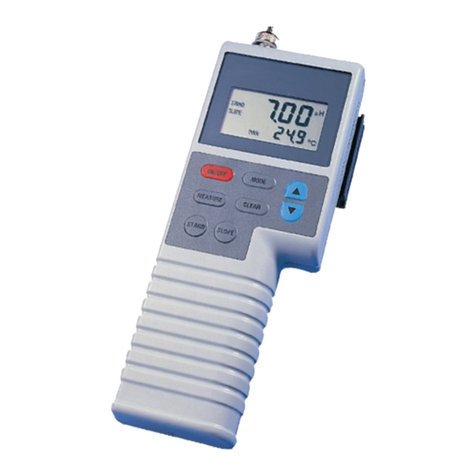
JENCO
JENCO 6230M User manual
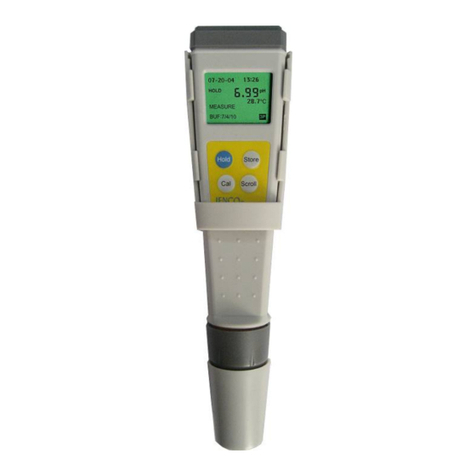
JENCO
JENCO VisionPlus pH618N User manual
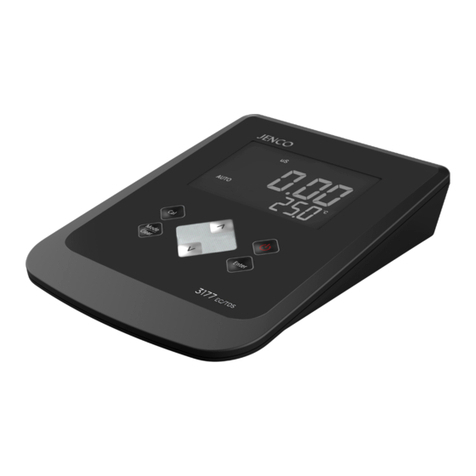
JENCO
JENCO 3177M User manual

JENCO
JENCO EC3840 User manual

JENCO
JENCO VisionPlus 9020M User manual
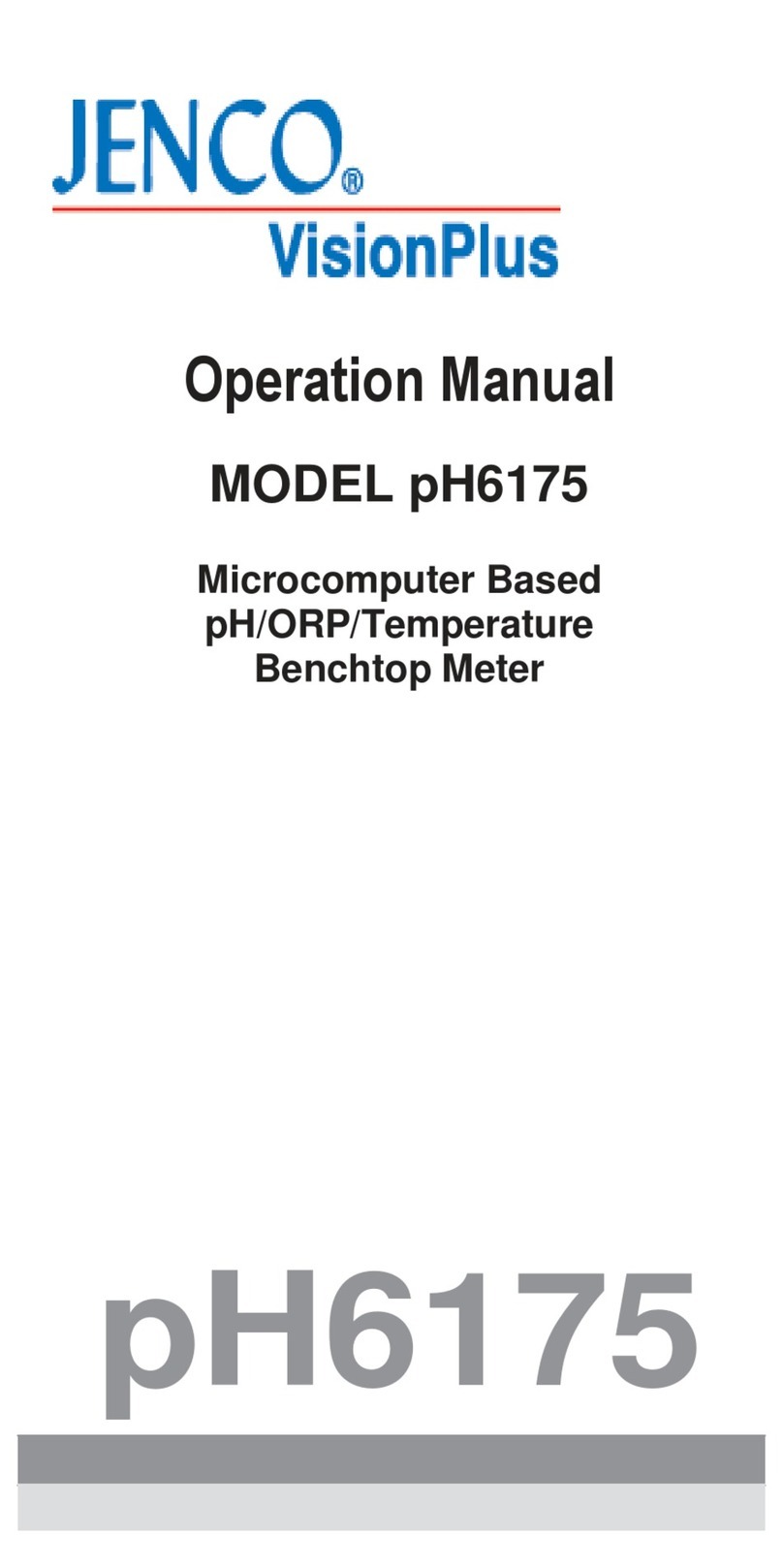
JENCO
JENCO VisionPlus pH6175 User manual

JENCO
JENCO 6011B User manual
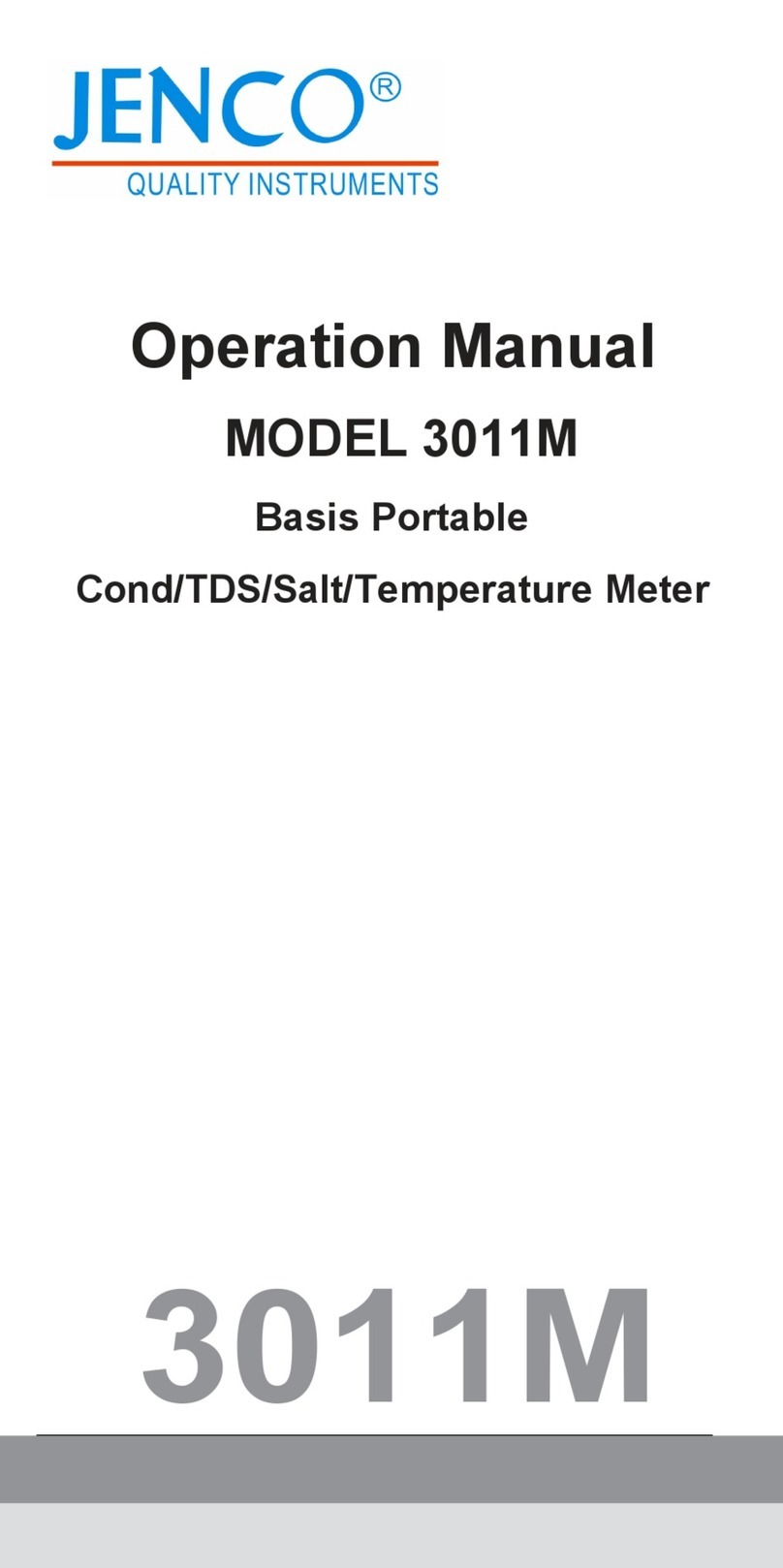
JENCO
JENCO 3011M User manual
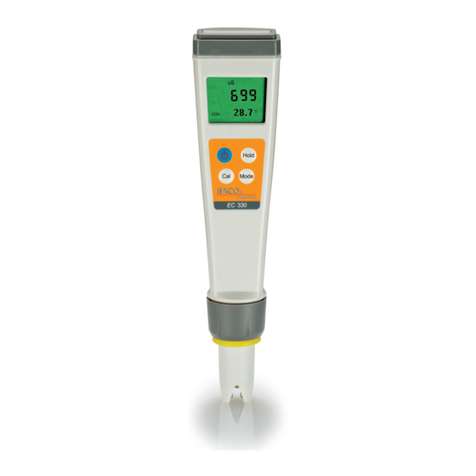
JENCO
JENCO VisionPlus EC 330 User manual
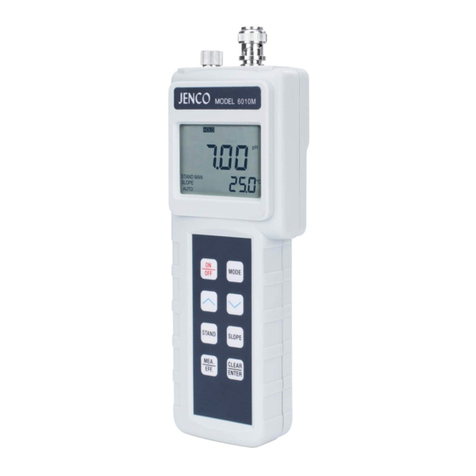
JENCO
JENCO 6010M User manual
Popular Measuring Instrument manuals by other brands
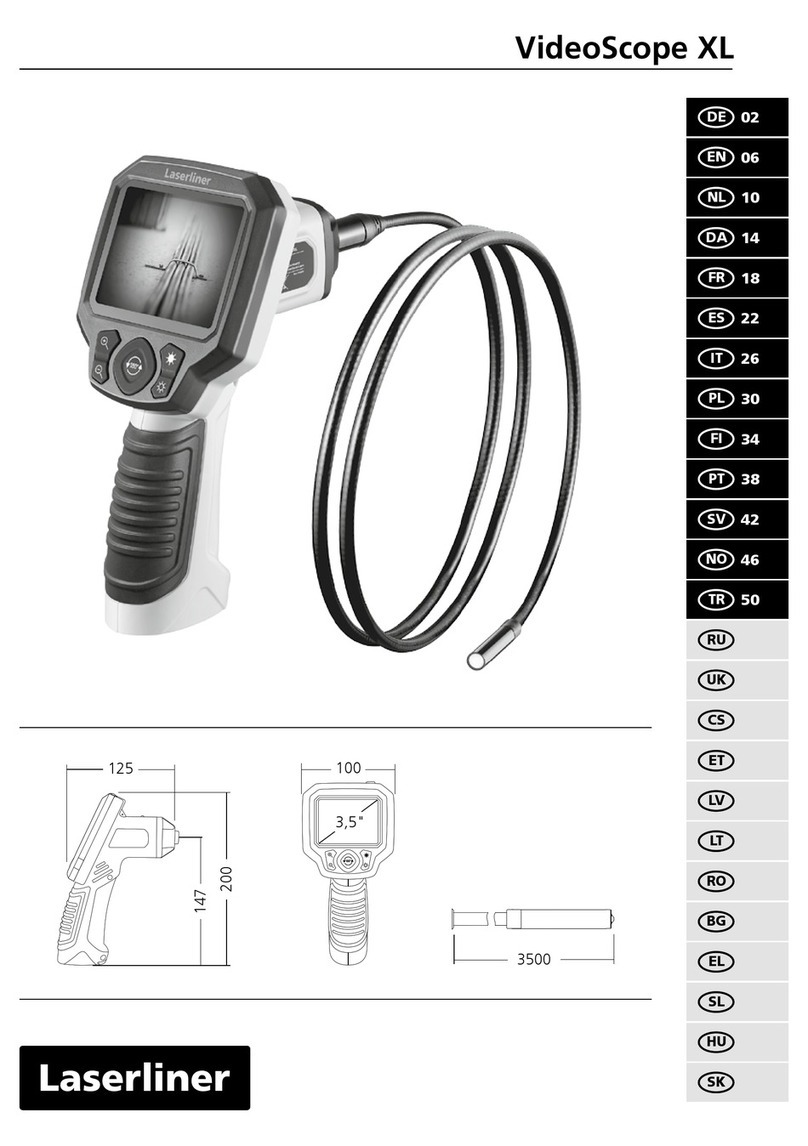
LaserLiner
LaserLiner VideoScope XL manual

Hilti
Hilti PR 3-HVSG A12 Original operating instructions
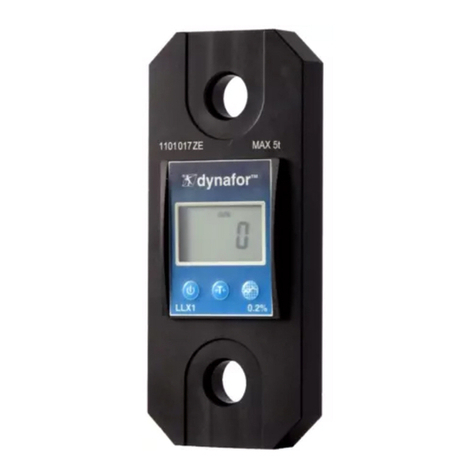
Tractel
Tractel dynafor LLX1 Series Operation and maintenance manual

Milwaukee
Milwaukee MA888 instruction manual
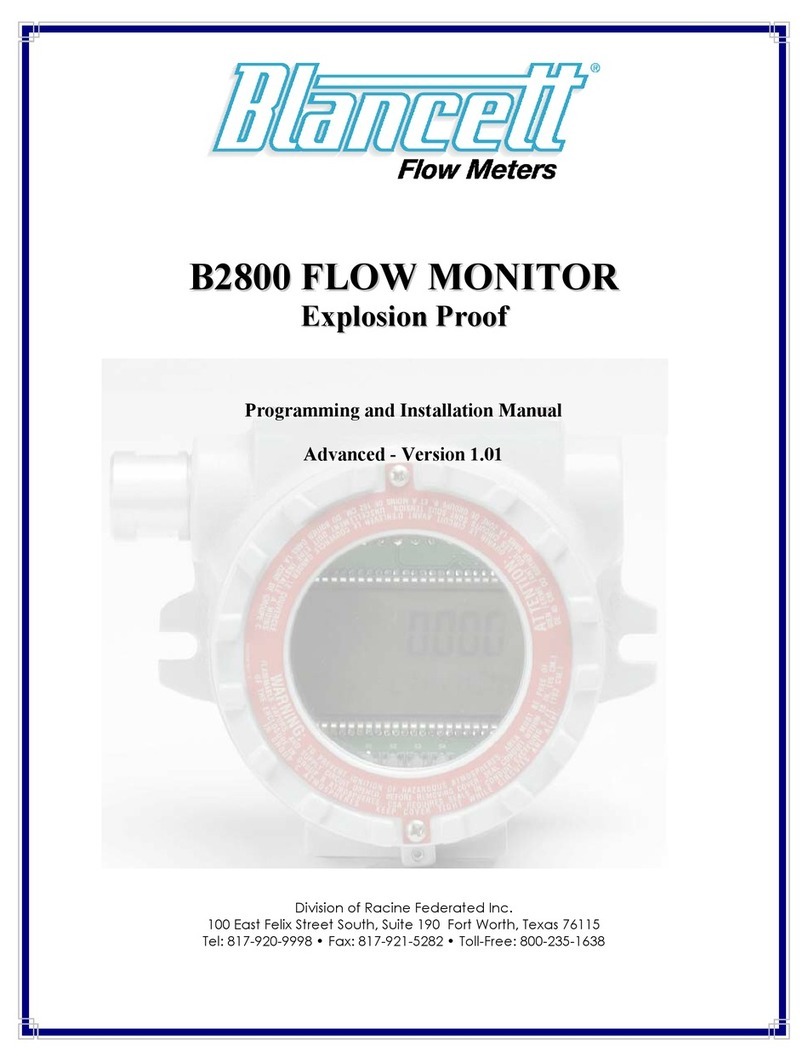
Blancett
Blancett B2800 Standard Programming and installation manual
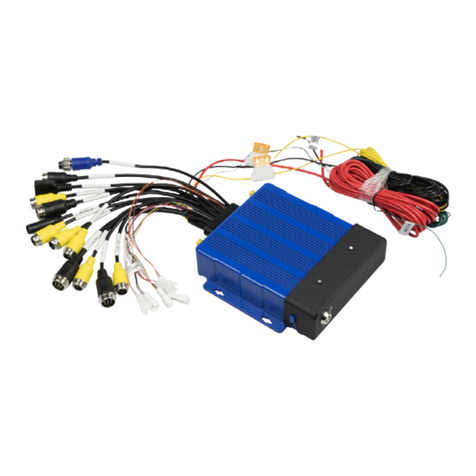
FRC
FRC InView 360 HD AVM installation guide
